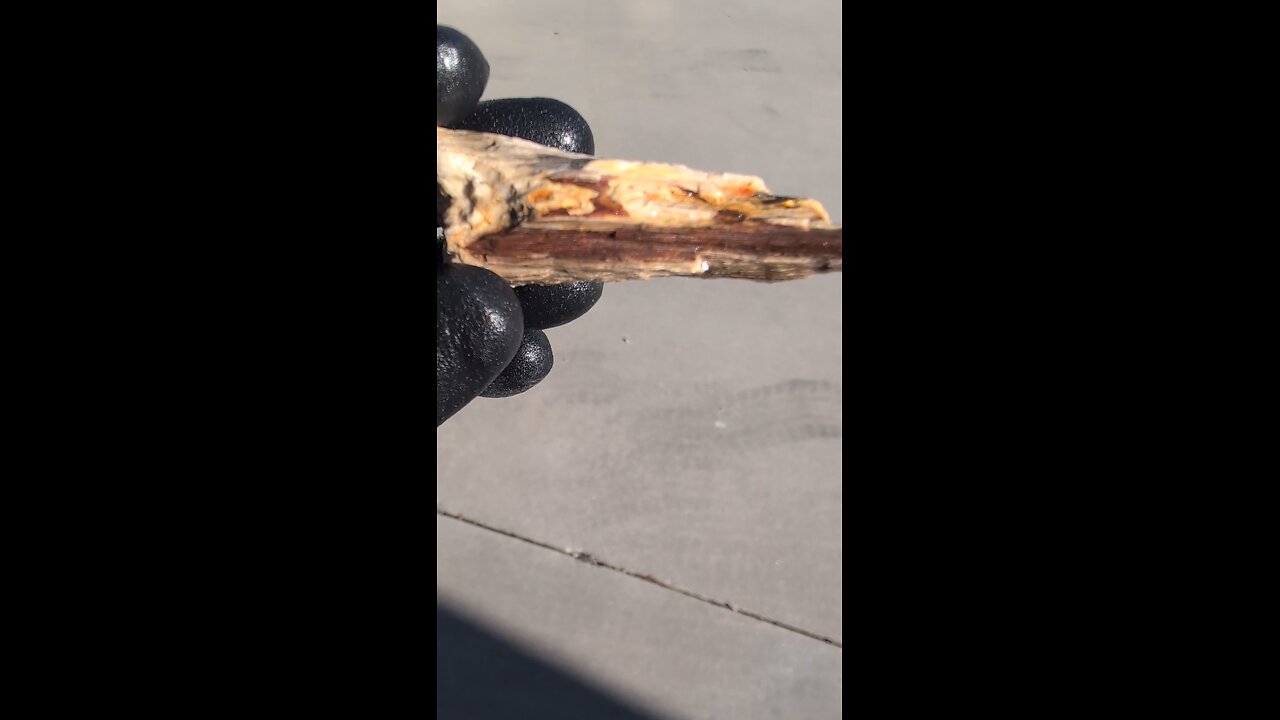Premium Only Content

Petrified wood!
Petrified wood is a type of fossil where the organic materials of a tree or tree-like plant have been replaced by minerals, preserving the original structure of the wood in stone form. Here are some key details about petrified wood:
Formation: The process of petrifaction involves several steps:
Burial: The wood must be buried quickly in sediment, usually in environments like river floodplains or volcanic ash deposits, to prevent decay.
Mineralization: Groundwater rich in dissolved minerals, primarily silica (but can also include iron, manganese, or other minerals), seeps into the wood. Over time, the minerals precipitate out of the water and replace the organic material cell by cell, effectively turning the wood into stone while maintaining its original structure.
Recrystallization: The silica often recrystallizes into quartz, preserving the cellular structure of the wood in fine detail.
Composition: While the primary mineral in petrified wood is often quartz, other minerals like calcite, pyrite, or oxides of iron and manganese can also be involved, contributing to the variety of colors seen in petrified wood.
Texture: Petrified wood retains the texture of the original wood, with growth rings, knots, and even bark sometimes visible. The texture can range from fine-grained to coarse, depending on the degree of mineral replacement and the type of wood.
Color: The color of petrified wood varies widely based on the minerals involved in the replacement process:
Silica: Usually results in white, gray, or clear petrified wood.
Iron Oxides: Can give shades of red, yellow, or brown.
Manganese Oxides: Often produce black or dark brown colors.
Copper Compounds: Can result in green or blue hues.
Uses:
Decorative: Petrified wood is popular in home decor, used for making furniture, tabletops, bookends, and as display pieces due to its unique beauty and historical significance.
Jewelry: Slices or small pieces of petrified wood can be polished and used in jewelry, especially when colorful or with interesting patterns.
Scientific Study: It's valuable in paleobotany for understanding ancient forests, plant evolution, and the environmental conditions of the past.
Geological Significance: Petrified wood provides a window into ancient ecosystems, showing what types of vegetation existed millions of years ago. It's also a record of geological processes like volcanic activity, flooding, or changes in river courses that led to the burial and preservation of the wood.
-
 1:13:26
1:13:26
Squaring The Circle, A Randall Carlson Podcast
8 hours agoSaving The Bees and Healing The Planet!
9311 -
 16:18
16:18
Chris Harden
2 days agoCharlie Kirk Utah Reaction | What Locals Are Saying
4K2 -
 50:47
50:47
ChurchandState1776
18 hours agoFree speech is not negotiable with Sam Anthony
552 -
 LIVE
LIVE
Total Horse Channel
19 hours agoAMHA 2025 9/20
1,212 watching -
 16:59
16:59
Chris From The 740
18 hours ago $1.40 earnedIs Bigger Better? - The Gideon Optics Mediator 2 Is Here!
7.83K1 -
 7:58
7:58
Blackstone Griddles
15 hours agoTennessee Mountain Burgers on the Blackstone Griddle
13.3K2 -
 43:32
43:32
NAG Daily
16 hours agoThe Rezendes Rundown Ep. 17 - Epstein's Birthday Book
8.03K6 -
 9:28
9:28
Freedom Frontline
20 hours agoEric Schmitt Drops DAMNING Biden Video And The Media PANICS
14.5K11 -
 24:49
24:49
DeVory Darkins
1 day ago $28.76 earnedTrump drops shocking news on Omar as DC Mayor gets humiliated during painful hearing
150K192 -
 LIVE
LIVE
Times Now World
1 day agoLIVE | Lavrov Warns West: Humiliation of Russia Will Have Consequences | Russia | Putin | World News
145 watching